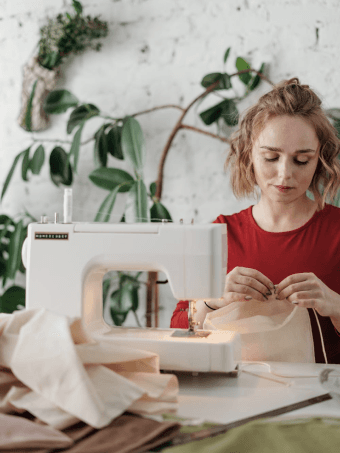How popular is luxury resale with consumers?
The global luxury resale market in 2021 was valued at US$32.61 billion and is likely to reach US$51.77 billion by 2026. In the past few years, the sale of pre-owned luxury goods has been increasing rapidly, and the stigma associated with the consumption of second-hand luxury has been disappearing. According to the Global Luxury Resale Market Report 2022, the luxury resale market is projected to grow at a CAGR of 9.68% during the forecast period of 2022-2026 [1].
What is behind this trend?
The current trend is fueled by shifting consumer behaviour that includes more sustainability-driven shopping habits and the general appeal of secondhand and retro fashion for younger generations.
According to First Insight, the majority of Gen Z shoppers prefer sustainable brands and are even willing to spend an additional 10% more for eco-friendly products. In fact, 3 out of 4 Gen Z consumers prioritize sustainability over the brand name when it comes to making a purchase. The second annual Recommerce Report from eBay highlights that younger consumers are the main emerging force in the secondhand marketplace, with 80% of Gen Z buying secondhand goods [2]. Finding ways to extend the lifetime of luxury products with the help of resale is a powerful way for brands, fashion platforms, and investors to show their commitment to sustainability and increase brand awareness.
And although the demand for secondhand luxury goods is surging and is expected to continue doing so, there are still multiple issues to be solved, such as counterfeiting and luxury resale authentication.
What is trademark counterfeit?
When another party illegally uses a protected trademark, it is referred to as "trademark infringement." The surge in the amount of luxury resale coincides with an increase within one specific area of trademark infringement - the creation of counterfeit products.
Counterfeiting occurs when a manufacturer produces unauthorized goods so that they very closely resemble brand-name goods. Trademark counterfeiting also includes instances when services are presented or advertised to trick consumers into thinking they come from a legitimate source.
Trademark law aims to prevent consumer confusion so that consumers can reasonably depend upon the item they purchase to retain the brand's characteristics. Therefore, a person who places a counterfeit item within the stream of commerce may be liable for violating trademark law. While most consumers are aware that a stand set up on the local market is most likely selling counterfeit goods, there are many instances where it is not so obvious.
Examples of luxury resale counterfeit disputes
Although some luxury brands have embraced the resale industry as an evolving luxury retailer in the fashion industry, some brands choose to remain cautious and take immediate action upon potential counterfeiting. Chanel is one example of such brands, as it brought court action against The RealReal Inc, in November 2018 for, among other things, trademark infringement and false advertising over The RealReal’s sale of allegedly counterfeit Chanel handbags.
The RealReal Inc., founded by Julie Wainwright, is a California based company specializing in secondhand luxury consignment. The designer clothes resale company takes possession of goods and guarantees that what it sells is authentic. However, Chanel has claimed that The RealReal has previously sold counterfeit “Chanel” items to customers. In January 2016, Chanel issued guidelines to other sellers that include: “Stop using claims such as ‘100% authentic’, ‘we guarantee authenticity’ or similar claims as they pertain to Chanel products, because only Chanel can guarantee the authenticity of its products.”
Another example of brand enforcement against platforms that allow for counterfeit selling includes the case of Tiffany (NJ) Inc. v. eBay Inc. Tiffany, a seller of luxury jewellery items, sued eBay, an online marketplace that connected various buyers and sellers, for facilitating counterfeit selling of Tiffany jewellery under the guise of them being authentic Tiffany pieces. The court upheld that eBay’s efforts to combat the sale of counterfeit goods were not sufficient to prevent consumer confusion. Therefore, eBay is liable for false advertising insofar as eBay advertised the sale of Tiffany jewellery on its website, knowing that some of the “Tiffany” products on its website were not authentic.
How can brands protect themselves from counterfeit?
To address the current issues connected with the rise of counterfeit products, brands are developing new luxury resale authentication strategies to battle unauthorized distribution of their products and gain customer trust. Current solutions tried by different companies ranging from in-house authentication to specific authentication services and to even more sophisticated blockchain technologies. Authentication is and will remain critical to the luxury resale market in order to ensure that brands are not losing out and the consumers get the real product.


